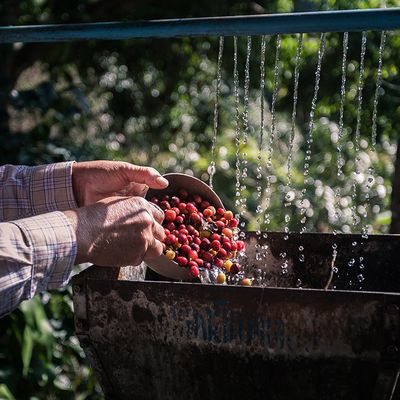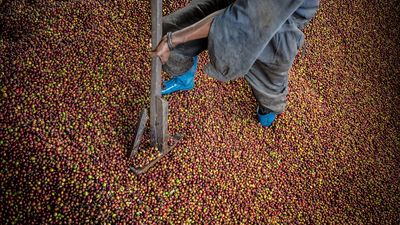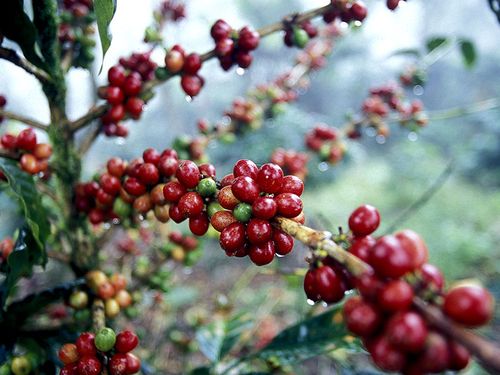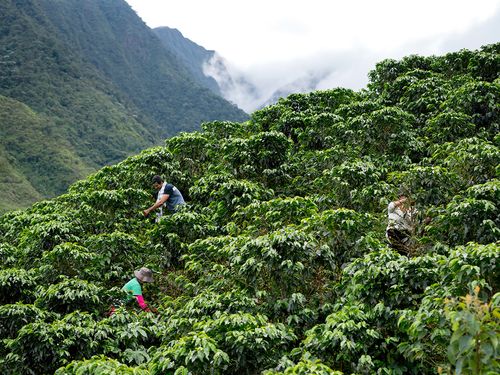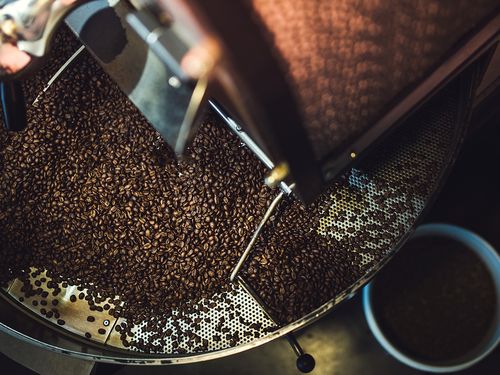Coffee processing at a glance.
From the tropical bean belt to your local barista, the coffee we consume is the product of a long journey, which processes freshly picked coffee cherries into raw “beans”. The process of transforming coffee cherries begins with the removal of their outer layers to expose the precious pips. These pips are processed using specific techniques and dried creating what we know as coffee beans. The method of processing depends on the region and can have as big an influence on flavour as where the coffee is grown.
Processing methods.
Wet processing, dry processing and semi-dry processing are all methods used by farmers to process freshly picked coffee. The method chosen is often determined by access to natural resources, as wet processing requires a access to fresh, clean water.
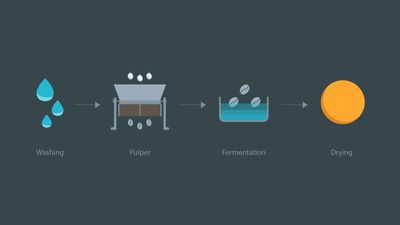
Wet processing.
Producing distinctive aromas and consistent quality, wet processing involves washing and sorting freshly picked cherries before putting them through a pulping machine. The beans are then left in tanks of water to ferment. Once fermentation has naturally removed the mucilage layer, the beans are washed, re-sorted and dried.
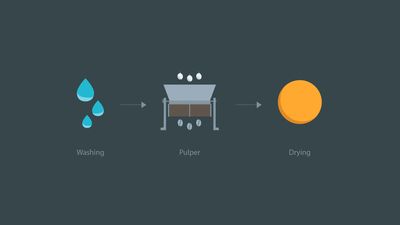
Semi-dry processing.
For milder tasting coffee, you might consider “semi-washed” or “semi-dry” processed coffee. It's similar to washed coffee in that coffee cherries are washed, sorted and pulped, however, the beans, are not fermented, instead, they are dried immediately. The mucilage layer is then mechanically removed.

Dry processing.
Unwashed or “natural” coffee refers to the dry processing method used in water-scarce regions. Freshly picked coffee cherries are spread out in the sun and dried for 2 to 5 weeks. The dried-out cherries are then peeled mechanically leaving behind the green coffee bean, producing sweeter, fruitier notes.

